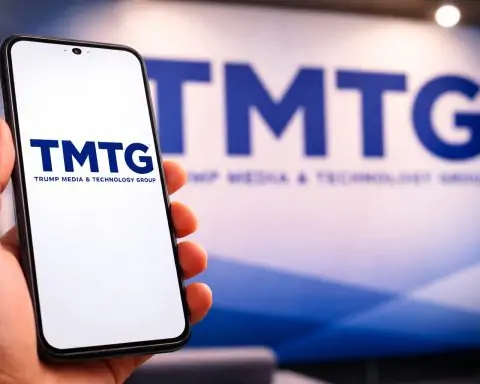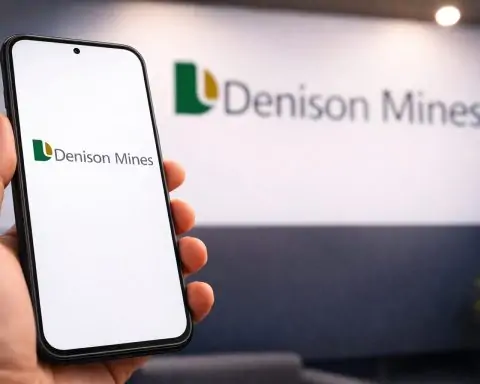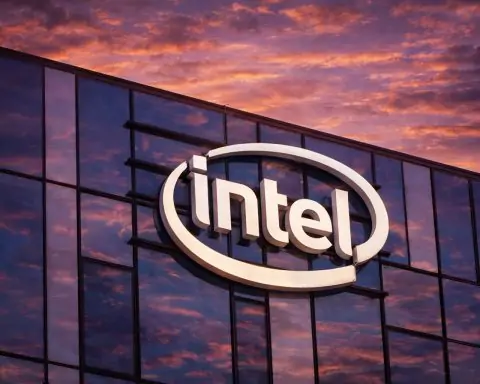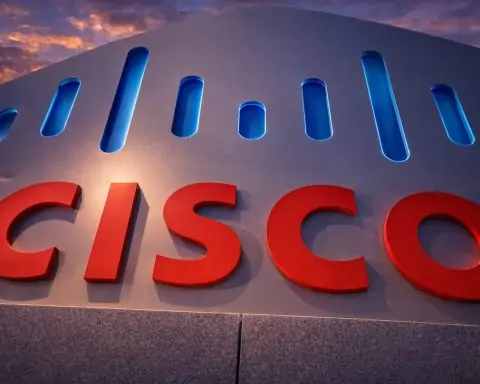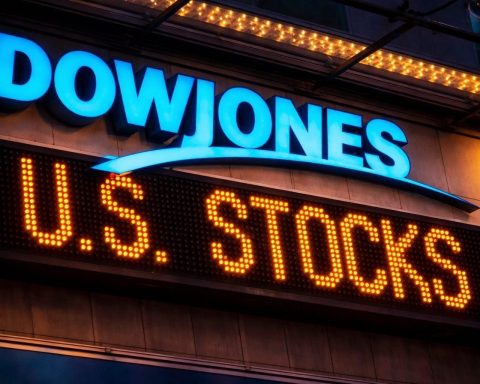- Celanese (specialty chemicals, Fortune 500) has rolled out a fully managed private 5G network (in partnership with NTT DATA) at two Texas plants [1]. This dedicated cellular network is designed to boost automation, safety and real-time data flow on the factory floor.
- Rapid Industry 4.0 boost: The new 5G network promises secure, high-speed connectivity and real-time logistics insights that improve operational efficiency [2] [3]. Celanese’s CIO says the NTT DATA solution “enhances responsiveness, safety and efficiency for frontline teams” [4].
- Turnkey 5G “stack”: NTT DATA integrated Celona’s private-5G core and radio equipment with its own cloud management platform, delivering the network as a fully managed service [5]. The on-premises 5G core works with Celona radios (often on CBRS spectrum) under NTT DATA’s network orchestration. This Network-as-a-Service approach can deploy private 5G much faster than old-school builds.
- Proven benefits: Other industries report big gains from similar networks. For example, Jaguar Land Rover used private 5G to cover a five-story paint shop where Wi-Fi failed [6], and Lufthansa cut cargo processing time by 60% at LAX by replacing flaky Wi-Fi with private 5G [7]. (In chemicals, Chevron Phillips Chemical recently added private LTE/5G at eight U.S. plants for better connectivity [8].)
- Rapid growth expected: Analysts predict private 5G spending will skyrocket in manufacturing. One report forecasts a ~41% annual CAGR to about $5 billion per year by 2028 [9]. Governments and vendors are enabling more spectrum and service models, so tens of thousands of enterprise 5G networks are expected worldwide in the next few years [10].
Industry 4.0 Demands New Connectivity
Modern “smart” factories rely on endless sensors, robots and automated machinery. Experts note that today’s factories run on data and communication – not just assembly lines [11] [12]. But traditional Wi‑Fi or public cellular often falters indoors or around heavy equipment. As one analyst explains, Wi‑Fi can’t handle mobility and coverage in a giant metal plant; it suffers interference and dropped links [13] [14]. In contrast, a private 5G network is a closed cellular system dedicated to one site. It delivers low-latency, high-capacity, reliable connectivity that can span large areas and penetrate tough environments [15] [16].
For Celanese – which operates 25 plants worldwide (including massive acetic-acid facilities) [17] – a robust network is crucial. NTT DATA notes that industrial plants have “signal gaps, interference and connectivity disruptions” that can halt production. The new private 5G aims to eliminate those gaps, giving every worker and machine seamless digital access [18]. In short, the network provides the digital backbone for Celanese’s Industry 4.0 transformation [19] [20].
Celanese’s Private 5G Deployment
On Sept. 24, 2025, NTT DATA announced that Celanese has turned on its private 5G at two Texas facilities (Clear Lake and Bishop) [21] [22]. The network is “fully managed” by NTT DATA: the vendor handled the site surveys, equipment, installation and now cloud-based monitoring. NTT DATA Global President Prasoon Saxena said Celanese is “unlocking secure, high-speed connectivity that supports automation, enhances worker safety and enables real-time decision-making” [23]. Celanese CIO Sameer Purao adds that the collaboration “strengthens our ability to implement advanced connectivity solutions… for frontline teams” [24].
In practice, this means Celanese workers on the plant floor will have reliable wireless links for tablets, wearables, sensors and cameras – even in far-flung corners of an outdoor chemical plant. The network feeds into Celanese’s digital systems to provide real-time logistics and operational data. For example, managers can track material flows continuously, and automated equipment (like guided vehicles or robots) can run without dropped signals.
How the 5G Network Works
NTT DATA’s solution uses equipment from Celona (a specialist in enterprise wireless). Celona provides both the 5G core network and radio access gear. The 5G core runs on Celanese’s premises, while Celona’s small 5G base stations (often using CBRS mid-band spectrum) cover the facility. On top of that, NTT DATA layers a cloud-based orchestrator to manage the network remotely [25] [26]. In other words, NTT DATA “compiled the entire stack” of hardware and software into one packaged service [27].
This end-to-end model (sometimes called 5G-NaaS) is gaining popularity. By combining design, deployment, and ongoing support, Celanese did not have to build expertise in 5G radio planning or management. According to industry analyses, such “network-as-a-service” offerings can cut deployment time from months to days, with a pay-as-you-go model reducing capital barriers [28] [29]. Celanese’s deal highlights how vendors like NTT DATA partner with telecom startups (Celona) to deliver plug-and-play private networks for big enterprises.
Use Cases and Benefits in Manufacturing
With the network live, Celanese is already exploring multiple use cases at the edge of its plants. Analysts and press reports list typical benefits:
- Automation: Robots, AGVs and smart machines can now connect with ultra-low latency for coordinated control. NTT DATA notes that robots and sensors “can now connect securely and operate with low latency,” enabling optimized production lines and predictive maintenance [30].
- Worker Safety and Comms: Instead of analog radios, workers get high-definition video and data links. Real-time communication tools (video, sensors, alerts) improve situational awareness. Celanese specifically cites worker safety – frontline teams can react faster with live data feeds [31] [32].
- Edge Data Access: Instead of returning to an office, technicians can pull up manuals, sensor stats or instructions on mobile devices instantly. With 5G covering the facility, “employees can retrieve critical data and instructions directly from the shop floor,” cutting delays [33].
- Operational Visibility: The company gains end-to-end visibility of logistics and materials. For instance, tracking raw material movement or tank levels in real time helps eliminate blind spots. NTT DATA highlights that the network delivers “real-time insights into business logistics” for smarter decision-making [34].
These use cases also come with core network benefits. NTT DATA emphasizes that a private 5G brings reliability (no interference or dead zones like Wi-Fi), security (a closed, on-site network immune to public internet hacks) [35], and efficiency (higher throughput and less downtime) [36]. The platform is also scalable for future growth – it can support new devices and workloads (like AI-based quality inspection or autonomous handling) as Celanese continues to digitize [37].
Private 5G Around the World
Celanese’s move fits a global trend: manufacturers, airports, ports and even cities are embracing private 5G. For example, in the automotive sector Jaguar Land Rover installed a private 5G at its UK factory to cover a five-story paint shop. That project solved major Wi-Fi limitations – it finally provided connectivity where “limited device connections, poor signal penetration and unstable handovers” had plagued the process [38]. In logistics, airlines are upgrading facilities: Lufthansa’s private 5G at its Los Angeles cargo hub cut processing delays by 60% by eliminating Wi-Fi dropouts [39]. Even beyond factories, private 5G helps robots valet-park cars, secure city surveillance, and speed container handling at ports.
In heavy industry, chemical giant Sinopec reports a private 5G at its Chinese oil refinery has cut accident rates by 20% and emissions by 30% [40]. And in the U.S., the Marines saw huge gains in logistics with a purpose-built 5G warehouse network [41]. These success stories echo Celanese’s rationale: a secure, tailored 5G network can make complex operations safer and more productive.
On the technology side, competition is heating up. Nokia, Ericsson, Cisco and others also offer private wireless solutions; even hyperscalers briefly entered the space (AWS had a now-discontinued Private 5G service). But the trend is clear: many firms find that replacing or augmenting Wi-Fi and legacy radios with private cellular unlocks new smart-manufacturing possibilities. As one industry designer put it, “Private 5G is quickly becoming the backbone of a digital evolution” in factories, provided the network is well-designed from the start [42].
Expert Voices and Outlook
NTT DATA’s executives frame the Celanese rollout as a major step forward. “By deploying Private 5G services, they’re unlocking secure, high-speed connectivity that supports automation, enhances worker safety and enables real-time decision-making,” said Prasoon Saxena, NTT DATA’s Global Products President [43]. Celanese CIO Sameer Purao echoed this, saying the partnership “strengthens our ability to implement advanced connectivity solutions, enhancing responsiveness, safety and efficiency” for his teams [44]. Such quotes highlight the promise: more agile, intelligent and resilient operations on the factory floor.
Market analysts concur. Research firm SNS Telecom & IT projects that global spending on enterprise private 5G networks will grow at about 41% per year, reaching roughly $5 billion per year by 2028 [45]. The manufacturing sector alone is expected to account for a large slice of that growth. (One estimate sees tens of thousands of private networks worldwide by 2025, with China leading deployments [46].) Governments are freeing up local-spectrum licenses and promoting digital factories, so momentum is building fast.
In the context of Industry 4.0, Celanese’s project serves as a visible example. As TeckNexus analyst Hema Kadia notes, “Celanese serves as a clear example of how 5G can modernize legacy infrastructure and enable a shift toward Industry 4.0” [47]. The Texas plants are now “fully operational” on 5G [48], and company leaders say they will likely extend the network to other sites. If these early rollouts deliver as promised, Celanese’s private 5G could indeed be a game-changer – paving the way for faster, safer, more automated chemical manufacturing.
Sources: Company press releases and technology news reports [49] [50] [51] [52] [53] [54] [55] [56] [57], including insights from NTT DATA and industry analysts. All data cited is from publicly available reports.
References
1. us.nttdata.com, 2. us.nttdata.com, 3. www.mobileworldlive.com, 4. us.nttdata.com, 5. www.rcrwireless.com, 6. www.rcrwireless.com, 7. www.rcrwireless.com, 8. www.kyndryl.com, 9. www.rcrwireless.com, 10. www.rcrwireless.com, 11. www.thefastmode.com, 12. www.thefastmode.com, 13. www.rcrwireless.com, 14. www.thefastmode.com, 15. www.thefastmode.com, 16. www.rcrwireless.com, 17. www.rcrwireless.com, 18. us.nttdata.com, 19. us.nttdata.com, 20. www.computerweekly.com, 21. us.nttdata.com, 22. www.rcrwireless.com, 23. us.nttdata.com, 24. us.nttdata.com, 25. www.rcrwireless.com, 26. www.rcrwireless.com, 27. www.rcrwireless.com, 28. content.twimbit.com, 29. tecknexus.com, 30. tecknexus.com, 31. us.nttdata.com, 32. tecknexus.com, 33. tecknexus.com, 34. us.nttdata.com, 35. tecknexus.com, 36. tecknexus.com, 37. tecknexus.com, 38. www.rcrwireless.com, 39. www.rcrwireless.com, 40. www.rcrwireless.com, 41. www.rcrwireless.com, 42. www.thefastmode.com, 43. us.nttdata.com, 44. us.nttdata.com, 45. www.rcrwireless.com, 46. content.twimbit.com, 47. tecknexus.com, 48. tecknexus.com, 49. us.nttdata.com, 50. www.computerweekly.com, 51. www.rcrwireless.com, 52. www.mobileworldlive.com, 53. www.rcrwireless.com, 54. www.rcrwireless.com, 55. www.rcrwireless.com, 56. tecknexus.com, 57. www.rcrwireless.com

